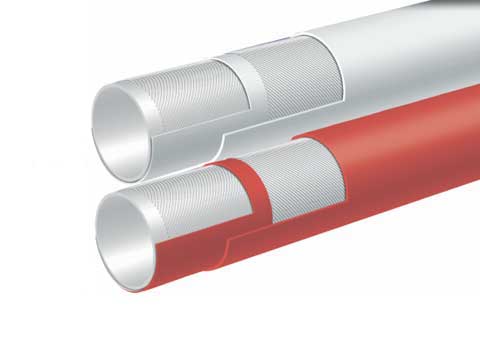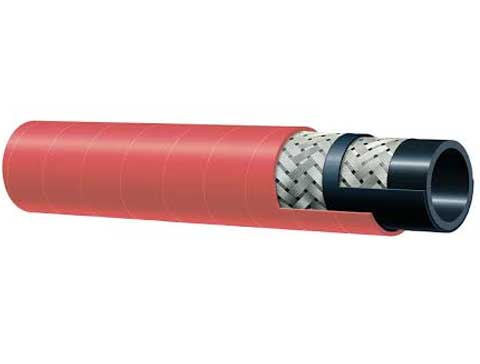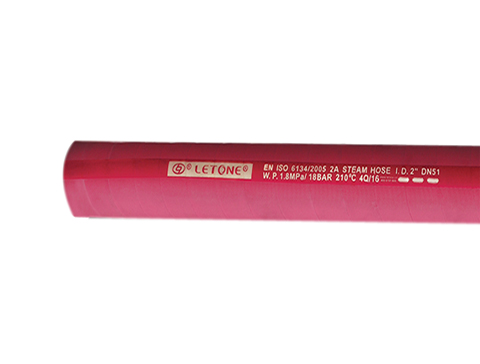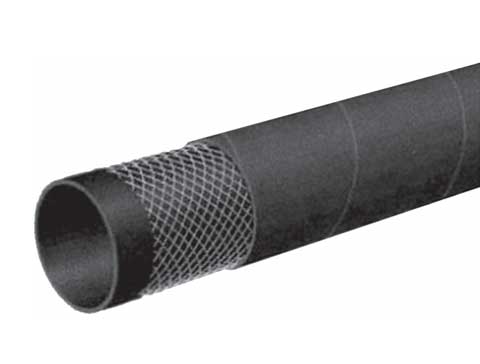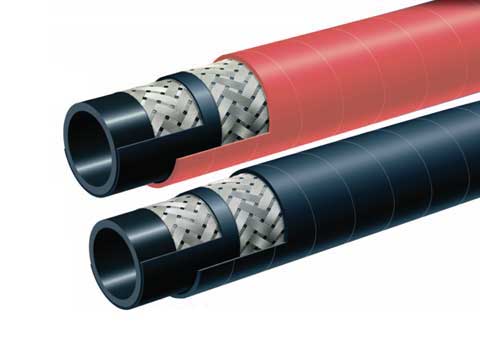How to Choose UPE Industrial Hoses
Introduction:
Choosing the right UPE industrial hose is crucial for ensuring the safe and efficient transportation of chemicals, solvents, and other fluids in various industries. With a wide range of options available, selecting the most suitable hose can be challenging. This article provides a comprehensive guide on how to choose UPE industrial hoses. We will discuss key considerations such as material compatibility, hose specifications, and industry standards.
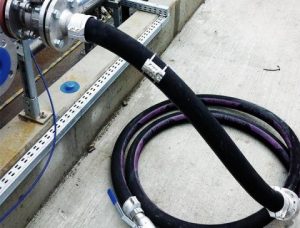 I. Material Compatibility
1.1 Analyzing Fluid Compatibility
Before selecting a UPE industrial hose, it is essential to assess the compatibility of the hose material with the fluid it will transport. Different fluids have varying chemical compositions, which can react with certain hose materials, leading to degradation or failure. Consult with the hose manufacturer or supplier to determine which hose material is most suitable for the specific fluid being conveyed.
1.2 Resistance to Chemicals and Solvents
UPE (Ultra-High Molecular Weight Polyethylene) is a commonly used material for industrial hoses due to its excellent resistance to a wide range of chemicals and solvents. However, it is still essential to verify whether the UPE hose is compatible with the specific chemicals or solvents used in your industry. Review the manufacturer's compatibility charts and seek expert guidance to ensure the hose can withstand the fluids it will come into contact with.
1.3 Temperature and Pressure Considerations
Apart from considering fluid compatibility, it is crucial to evaluate the maximum operating temperature and pressure requirements of the application. UPE hoses come with specific temperature and pressure ratings that must be matched to the requirements of the industrial process. Select a hose that can withstand the highest temperature and pressure conditions expected in your application to ensure safe and reliable operation.
II. Hose Specifications
2.1 Hose Diameter and Length
Choosing the correct diameter and length of the UPE industrial hose is crucial for efficient fluid transportation. Consider the flow rate requirements of your application to determine the appropriate hose diameter. Additionally, ensure the hose length is adequate to reach the desired connection points without excessive stretching or bending, which can cause premature wear and potential failure.
2.2 Reinforcement and Construction
UPE industrial hoses are reinforced to provide strength and durability. The reinforcement material, such as textile, wire, or synthetic fibers, affects the hose's flexibility, pressure resistance, and overall performance. Consider the specific requirements of your application to determine the appropriate reinforcement type.
Additionally, assess the hose construction, including the number of layers and the quality of the UPE material. A robust construction and high-quality UPE material ensure longevity and resistance to wear, abrasion, and external environmental factors.
2.3 End Fittings and Couplings
The selection of appropriate end fittings and couplings is crucial for ensuring secure and leak-free connections. Consider the compatibility of the hose end fittings with the fluid and the equipment it will be connected to. Choose fittings and couplings made from materials that are resistant to corrosion and can withstand the operating conditions of the application.
III. Industry Standards and Certifications
3.1 Compliance with Safety Standards
When selecting UPE industrial hoses, it is essential to ensure they comply with relevant safety standards and certifications. Look for hoses that meet international or industry-specific standards such as ISO, EN, or FDA regulations, depending on the application requirements. Compliance with these standards ensures the hoses have undergone rigorous testing and meet the necessary quality and safety criteria.
3.2 Manufacturer Reputation and Support
Consider the reputation and reliability of the hose manufacturer or supplier. Look for companies with a proven track record of producing high-quality hoses and providing excellent customer support. Established manufacturers often have a wealth of technical knowledge and can assist in selecting the most suitable hose for your specific application.
3.3 Warranty and After-Sales Support
Assess the warranty and after-sales support offered by the manufacturer. A comprehensive warranty ensures that you are protected against manufacturing defects or premature hose failure. Additionally, inquire about the availability of technical support, training, and maintenance guidance to ensure you can maximize the lifespan and performance of the selected UPE industrial hose.
Conclusion:
Choosing the right UPE industrial hose requires careful consideration of material compatibility, hose specifications, and adherence to industry standards. Analyzing fluid compatibility, resistance to chemicals and solvents, as well as temperature and pressure requirements, ensures the selected hose can withstand the specific application demands. Evaluating hose diameter, length, reinforcement, and construction guarantees optimal fluid transportation. Lastly, compliance with safety standards, manufacturer reputation, and after-sales support contribute to a successful hose selection. By following these guidelines, industrial operators can confidently select the most suitable UPE industrial hoses for their applications, ensuring safe and efficient fluid conveyance.
I. Material Compatibility
1.1 Analyzing Fluid Compatibility
Before selecting a UPE industrial hose, it is essential to assess the compatibility of the hose material with the fluid it will transport. Different fluids have varying chemical compositions, which can react with certain hose materials, leading to degradation or failure. Consult with the hose manufacturer or supplier to determine which hose material is most suitable for the specific fluid being conveyed.
1.2 Resistance to Chemicals and Solvents
UPE (Ultra-High Molecular Weight Polyethylene) is a commonly used material for industrial hoses due to its excellent resistance to a wide range of chemicals and solvents. However, it is still essential to verify whether the UPE hose is compatible with the specific chemicals or solvents used in your industry. Review the manufacturer's compatibility charts and seek expert guidance to ensure the hose can withstand the fluids it will come into contact with.
1.3 Temperature and Pressure Considerations
Apart from considering fluid compatibility, it is crucial to evaluate the maximum operating temperature and pressure requirements of the application. UPE hoses come with specific temperature and pressure ratings that must be matched to the requirements of the industrial process. Select a hose that can withstand the highest temperature and pressure conditions expected in your application to ensure safe and reliable operation.
II. Hose Specifications
2.1 Hose Diameter and Length
Choosing the correct diameter and length of the UPE industrial hose is crucial for efficient fluid transportation. Consider the flow rate requirements of your application to determine the appropriate hose diameter. Additionally, ensure the hose length is adequate to reach the desired connection points without excessive stretching or bending, which can cause premature wear and potential failure.
2.2 Reinforcement and Construction
UPE industrial hoses are reinforced to provide strength and durability. The reinforcement material, such as textile, wire, or synthetic fibers, affects the hose's flexibility, pressure resistance, and overall performance. Consider the specific requirements of your application to determine the appropriate reinforcement type.
Additionally, assess the hose construction, including the number of layers and the quality of the UPE material. A robust construction and high-quality UPE material ensure longevity and resistance to wear, abrasion, and external environmental factors.
2.3 End Fittings and Couplings
The selection of appropriate end fittings and couplings is crucial for ensuring secure and leak-free connections. Consider the compatibility of the hose end fittings with the fluid and the equipment it will be connected to. Choose fittings and couplings made from materials that are resistant to corrosion and can withstand the operating conditions of the application.
III. Industry Standards and Certifications
3.1 Compliance with Safety Standards
When selecting UPE industrial hoses, it is essential to ensure they comply with relevant safety standards and certifications. Look for hoses that meet international or industry-specific standards such as ISO, EN, or FDA regulations, depending on the application requirements. Compliance with these standards ensures the hoses have undergone rigorous testing and meet the necessary quality and safety criteria.
3.2 Manufacturer Reputation and Support
Consider the reputation and reliability of the hose manufacturer or supplier. Look for companies with a proven track record of producing high-quality hoses and providing excellent customer support. Established manufacturers often have a wealth of technical knowledge and can assist in selecting the most suitable hose for your specific application.
3.3 Warranty and After-Sales Support
Assess the warranty and after-sales support offered by the manufacturer. A comprehensive warranty ensures that you are protected against manufacturing defects or premature hose failure. Additionally, inquire about the availability of technical support, training, and maintenance guidance to ensure you can maximize the lifespan and performance of the selected UPE industrial hose.
Conclusion:
Choosing the right UPE industrial hose requires careful consideration of material compatibility, hose specifications, and adherence to industry standards. Analyzing fluid compatibility, resistance to chemicals and solvents, as well as temperature and pressure requirements, ensures the selected hose can withstand the specific application demands. Evaluating hose diameter, length, reinforcement, and construction guarantees optimal fluid transportation. Lastly, compliance with safety standards, manufacturer reputation, and after-sales support contribute to a successful hose selection. By following these guidelines, industrial operators can confidently select the most suitable UPE industrial hoses for their applications, ensuring safe and efficient fluid conveyance.

